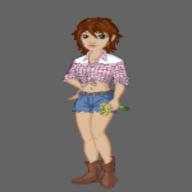1. What is meaning of the food chain?
2. Why food chain is very important?
Please answer in English!!
急問.......
2007-02-25 8:26 pm
回答 (1)
2007-02-25 10:30 pm
✔ 最佳答案
1. A food chain is the flow of energy from one organism to the next. There is one organism per trophic level, and trophic levels are therefore easily defined. They usually start with a primary producer and end with a top predator. Here is an example of a food chain:phytoplankton → copepod → fish → squid → seal → orca
This "chain" can be described as follows: Orca (also known as "killer whales") feed upon seals, that feed upon squid, that eat small fish, that feed on copepods, that feed on microscopic algae. In this example, algae—autotrophs by virtue of their ability to photosynthesize—are the base of the food chain. It is always the case that numbers—or at least biomass—decreases from the base of the chain to the top. In other words, the number and mass of phytoplankton cells are much greater than the number and mass of copepods being supported by the phytoplankton. Viewed another way: to support one orca requires many seals, large numbers of squid, huge numbers of fish, and so on down the chain (see energy pyramid). This is because, with each transfer, some of the energy is lost to the environment. On average, only 10% of the organism's energy is passed on to its predator.
Food chains are overly simplistic as representatives of what typically happens in nature. The food chain shows only one pathway of energy and material transfer. Most consumers feed on multiple species and are, in turn, fed upon by multiple other species. The relations of detritivores and parasites are seldom adequately characterized in such chains as well.
--- http://en.wikipedia.org/wiki/Food_chain
另一個簡單d既:
A food chain is an idea developed by a scientist named Charles Elton in 1927. He described the way plants get energy from sunlight, plant-eating animals get their energy from eating plants, and meat-eating animals get their energy from eating other animals. The idea of a "chain" means that all these animals are linked together, so anything that affects one "link" in the chain affects everything in the chain. The first link in the chain, the plant, is called the producer, while all the links above it are called consumers.
For example, look at a simple chain in which grass uses sunlight to produce sugars and proteins so it can grow. Rabbits eat the grass, and get energy from it. Foxes eat rabbits and get energy from them. Nothing eats foxes, so they are said to be at the "top" of that food chain. If something happens to the grass -- suppose a farmer plows up some of the grass to plant a field -- then the rabbits have less food, and some of them will die. Then because there are fewer rabbits, some of the foxes will die, too, even though they don't eat the grass directly.
Of course, in the real world, there are no simple food chains like this. Rabbits eat many things besides grass, and foxes eat many things besides rabbits -- and other things also eat grass and rabbits. When talking about the real world, it is more common to think of food webs.
---http://www.madsci.org/posts/archives/mar98/889129527.En.r.html
2. Food chains are important in biology, because they show how energy passes through all living things from one to another. This illustrates the way in which organisms depend on each other to survive.
---http://www.science.org.au/nova/039/039box02.htm
~:)
收錄日期: 2021-04-12 22:10:18
原文連結 [永久失效]:
https://hk.answers.yahoo.com/question/index?qid=20070225000051KK01796

